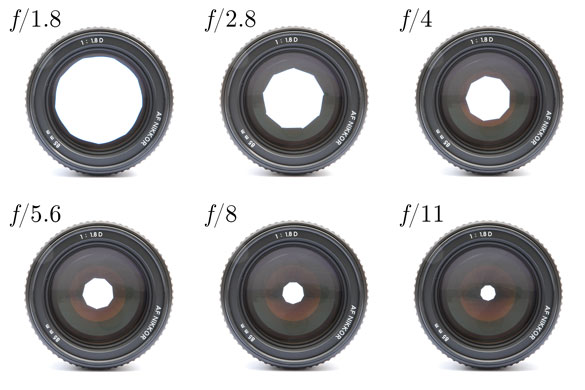
- #F stop aperture how to
- #F stop aperture full
- #F stop aperture iso
- #F stop aperture download
- #F stop aperture free
Thus, the exact same amount of light is exposing the picture.
#F stop aperture full
As you move from one sequence to the next, the shutter speed decreases by one full stop, while the aperture size inreases by one full stop.


However, each one of these sequences yields the exact same level of light exposure based on our explanation above. Second, note that these combinations will not necessarily yield correct exposures, as this will depend on the amount of light in each respective scene. Likewise, if the duration (shutter speed) remained constant, going from f/2.8 to f/2 aperture is a full stop increase in light as it doubles the amount of water (light) filling the bucket by doubling the size of the hole (aperture). So if the hole (aperture) stays constant, going from 1/100 to 1/50 shutter speed is a full stop increase since it would double the light exposure by doubling the amount of time the water (light) fills the bucket. A full stop means you either double, or half the amount of light in the exposure. First, it’s important to note that these are not all of the possible shutter speeds or apertures, but simply an example of a full stop sequence. See the following shutter speed and aperture sequences in the table below. To simplify and summarize, a lot of light = faster shutter speeds/higher (smaller) apertures, while a little light = slower shutter speeds/lower (larger) apertures. If there is a lot of light (water), the aperture (hole) would not need to be open as wide and/or the shutter speed (the duration of the opening) could be shorter to properly expose the image (fill the bucket). If there is not much water (light), the hole (aperture) would need to be open wide and/or the duration of the opening (shutter speed) would need to be longer in order to fill the bucket (properly expose the image). So in this analogy, the hole in the bucket is the aperture, the amount of time the hole is open is the shutter speed, the water pouring in is light, and a full bucket of water is a properly exposed image. Conversely, the larger the hole, the shorter amount of time the hole would need to be open in order to fill the bucket. The smaller the hole at the top, the longer the hole would need to be open in order to fill the bucket with water. In its most basic sense, you can think of exposure as a bucket with an adjustable hole that opens and closes at the top and a continuous stream of water pouring into the bucket. Therefore, an f/1.4 is a very large opening while f/22 is a very small opening. So even though 1/50 is greater than 1/200, the “higher” shutter would be 1/200.Īperture – Like shutter speeds, aperture is also stated in fractions, so it’s important to know that the smaller the number the bigger the opening. However, when people say “higher shutter speeds,” they’re referring to the faster shutter speed, not mathematically higher numbers. Shutter Speed – Shutter speeds are expressed as fractions of a second, so 1/50 is a longer period of time than 1/200. This is an except directly from the Photography 101 Workshop.Įxpanded Explanation of the Exposure Triangle Watch the video below to see how Pye explains the exposure triangle. Watch Understanding Exposure With The Exposure Triangle Below is a sample of what you’ll learn from Photography 101.
#F stop aperture how to
If you would rather learn via video or want to learn more, make sure you check out the SLR Lounge Photography 101 Workshop, where we show you how to create awesome images with basic gear, teach you how to move from the auto modes to manual mode and more on that tricky exposure triangle.

#F stop aperture download
You can download the card on the Fotoblog Hamburg site here. It is formatted for printing on a business card sized piece of paper to easily fit in your pocket when out practicing these concepts.
#F stop aperture iso
The card is meant to show you a basic overview of aperture, ISO and shutter speed, but doesn’t go into much detail of what it all means.
#F stop aperture free
Daniel Peter of Fotoblog Hamburg has created this free downloadable cheat sheet card for beginner photographers in easy to understand diagrams. This handy chart below would have saved me much time and tears if it were available eight years ago. (Note: Check out our friends at photzy for more free photography cheat sheets). One day, the light bulb finally clicked and I was on my way. I was drowning in diagrams and photos that I took at different ISO/shutter speed/aperture combinations. I had pages and pages of notes taken from Bryan Petersen’s Understanding Exposure. Trying to wrap my mind around the relationship between these three concepts when I was just starting out was rough.


 0 kommentar(er)
0 kommentar(er)
